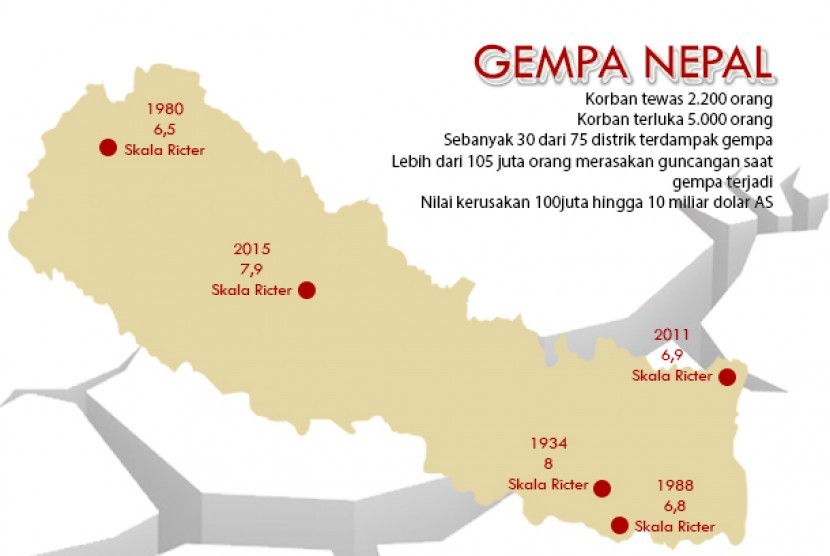REPUBLIKA.CO.ID, KATHMANDU -- Thousands are fleeing the Nepalese capital as rumors of shortage of food and water are spreading while the outcome of home and international relief operations remains uncertain, said diplomatic sources here Wednesday (29/4).
The death toll from the 7.9-magnitude quake last weekend now stood at 5,057 and a total of 10,915 others were injured, said the Ministry of Home Affairs on Tuesday. Thousands are still missing.
In the Nepalese capital and surrounding areas, many collapsed houses and their ruins remain not cleaned and many bodies are believed to be trapped underneath.
In the tourist town of Bhaktaur, the residential areas were virtually torn apart by the quake and all the residents are living outdoors or in tents. Some families are staying on trucks or in vehicles.
Nepalese troops and police are patrolling the streets of devastated areas and the security and order situation remain calm and peaceful in general.
Nepalese Prime Minister Sushil Koirala warned the death toll could rise as high as 10,000. While still battling food and water shortages, the Himalayan nation announced three days of mourning from Wednesday.
With many of the thousands injured in critical condition and hundreds still missing, the fatalities from Saturday's deadly temblor could soar up to 10,000, Koirala told the envoys of China, India, the United States here.
Meanwhile, around 9,000 people have been injured in the quake, Nepal Police officials said.
At least eight personnel of the Nepalese Army have died, 11 were reported missing, while 28 were injured in accidents during rescue operations conducted after Saturday's massive earthquake, army spokesperson Brig. Jagadish Chandra Pokhrel said on Tuesday.
But even as international aid poured in, with volunteers reaching some of the remotest parts of the landlocked nation, it became clear that the earthquake may turn out to be worse than the one that claimed over 8,000 lives in 1934 in Nepal.
All the heritage treasures of the country were destroyed, killing the livelihood of tens of thousands depending on tourism. In the capital alone, the three palaces of the former royal Nepalese kings were destroyed by the quake, inflicting unspeakable harm to the nation in terms of culture and economy.
The United Nations said the quake had impacted 8 million in 39 districts, of which over 2 million live in 11 most severely affected districts.


